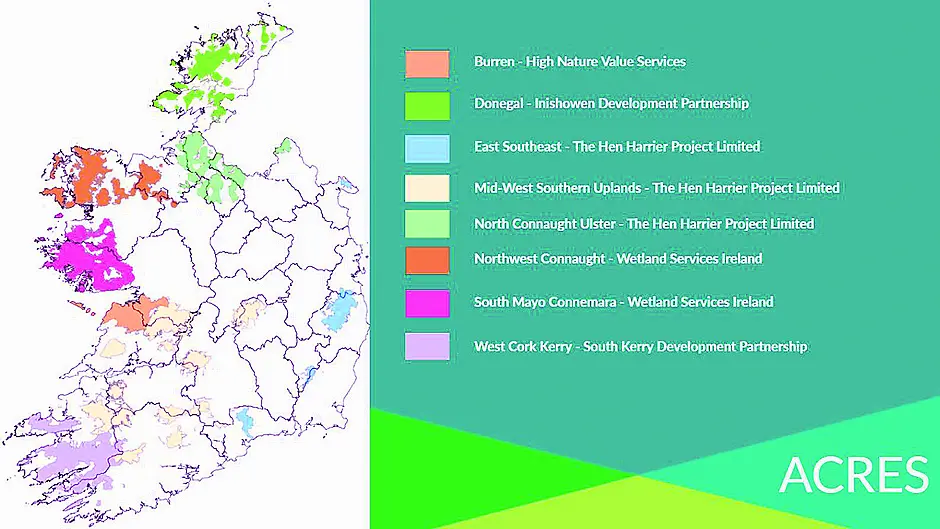A BUREAUCRATIC nightmare that will leave farmers baffled as to how it will benefit them, is how farming organisations have described the new national agri-environment scheme designed to address biodiversity decline.
Proposed as part of Ireland’s draft €9.8bn Cap, it will be known as the Agri-Climate Rural Environment Scheme (Acres).
This €1.5bn scheme is the single biggest investment ever by an Irish government and, and according to Taoiseach Micheál Martin, ‘meets a key commitment to design a flagship environmental scheme under the new Cap that is user-friendly for farmers, and will deliver broader environmental and biodiversity benefits.’
About 50,000 farmers will benefit from payments of between €7,300 and €10,500 a year, over five years.
Opening for applications in August, it is proposed that, like Glas, all farmers will have the opportunity to apply.
There are two ways to apply, and it will be decided on by a farmer’s location. A co-operation approach, is available to farmers in eight defined high priority geographical areas.
The areas have been defined by a cross departmental working group as having particular environmental characteristics, and includes parts of West Cork and Kerry, with South Kerry Development Partnership.
The area includes Beara and Sheep’s Head, but the Mizen misses out. There’s also a general option to apply outside of these areas.
But ICSA rural development chair Tim Farrell said that Acres ‘still leaves farmers baffled as to how it will reward those who want to go the extra mile for environmental objectives.’
He said it lacked innovation, and seemed to be a ‘re-hash of Glas, which was marked by a lot of actions which were too costly to benefit the farmer.
‘It is disappointing that, at a time where the EU Green Deal is centre stage, the new agri-environment scheme brings less benefits to farmers who want to go the extra mile, than Reps did 20 years ago,’ he said.
‘Unless the value of a farmer’s time, including management and administration, is factored into the agri-environment scheme, they would be better off looking at off-farm income opportunities at a time where jobs were never so plentiful.’ IFA president Tim Cullinan said the scheme was ‘likely to be a bureaucratic nightmare.’
‘While we don’t have full visibility on the exact conditions of the scheme, it looks very complicated and is likely to be tied up in red tape,’ he said.
He said the top payment rate of €10,500 per farmer must be available to all farmers, not just those, in one of the eight areas.
‘Results-based measures must be realistic and suitable for all sectors. They must include a large list of options and provide for simple scoring which is easily defined. They must also be practical and achievable.
‘Consultation with farmers on the design of the scheme has been minimal, but from what we have seen, it will cause huge frustration amongst farmers. For a scheme which is due to open this year, there are simply not enough details available to help farmers prepare,’ he said.
‘This is typical of how the Minister and his department are operating now. Big announcements with headline figures before the detail is properly discussed with farmers,’ he said.
‘We have had various environment schemes over the years from Reps to Aeos to Glas. Each version has put more costs on farmers without any income increase,’ he said.
Meanwhile, teams will now begin work developing local action plans for their zones and engaging with farmers and advisers in their locality.
Farmers will be able to identify the approach for which they are eligible by logging on to the Department’s online system (AgFood).










